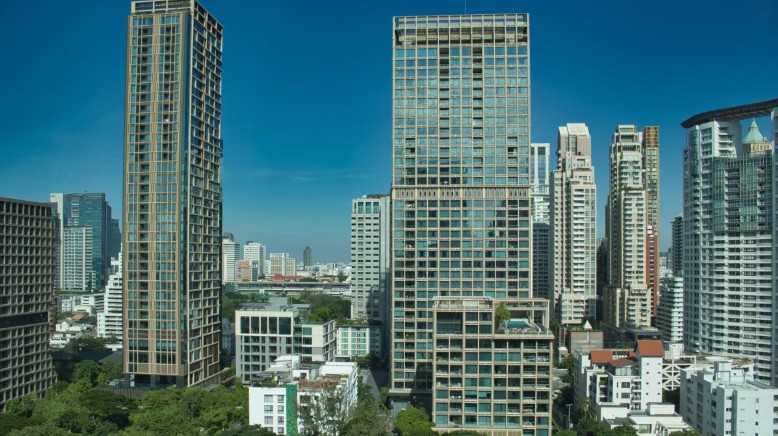Smart Real Estate Decisions: Navigating Singapore’s Private Condominium Market in 2025

Singapore’s property market has always been about location, but in 2025, this principle carries even greater weight. As the island nation continues its urban evolution, choosing the right residential address means balancing accessibility, tranquility, and future growth potential. For discerning homebuyers and investors, understanding these dynamics separates smart decisions from costly mistakes that take years to correct.
Narra Residences at Dairy Farm Walk exemplifies this balance perfectly—a development that captures the essence of strategic positioning in Singapore’s real estate landscape. Situated in District 23, this upcoming condominium offers something increasingly rare: proximity to nature reserves while maintaining strong connectivity to the city’s economic centers. This combination creates genuine lifestyle value that extends far beyond marketing brochures and sales pitches.
The modern property buyer seeks more than just four walls and a roof. They’re investing in daily convenience, time savings, and environments that support both personal wellbeing and financial growth. Developments positioned in areas with established infrastructure, comprehensive amenities, and proven track records of value appreciation consistently outperform those relying solely on future promises and speculative growth projections.
The Connectivity Factor: Why Transportation Access Drives Property Values
Transportation infrastructure fundamentally shapes property desirability and long-term value trajectories in Singapore. The government’s continuous expansion of MRT networks has repeatedly demonstrated how rail connectivity transforms neighborhoods and elevates property valuations. Developments near existing or upcoming MRT stations consistently outperform those relying primarily on bus connectivity or requiring significant travel time to reach rail networks.
Multiple transport options create resilience in property values. While MRT access provides the primary appeal for most buyers, proximity to major expressways ensures residents maintain mobility choices regardless of circumstances or destinations. This redundancy in transportation infrastructure protects property values even as urban planning priorities evolve and shift over time.
The Dairy Farm area benefits from excellent connectivity through Hillview MRT Station on the Downtown Line, providing direct access to key business districts, educational institutions, and lifestyle destinations. The Bukit Timah Expressway and Pan-Island Expressway further enhance accessibility, creating genuine flexibility for residents whose work or lifestyle requires travel beyond MRT coverage areas.
Nature Integration: The Premium Modern Buyers Pay For
Environmental consciousness has evolved from niche preference to mainstream priority among Singapore property buyers. Developments surrounded by green spaces, nature reserves, and parks command premiums that continue growing as urban density increases. This trend reflects fundamental shifts in lifestyle priorities accelerated by recent years when people spent more time in their immediate neighborhoods.
Properties near Dairy Farm Nature Park, Bukit Timah Nature Reserve, and Rail Corridor green spaces offer residents direct access to outdoor recreation without requiring lengthy travel. This proximity creates daily wellness opportunities—morning jogs through nature trails, weekend cycling adventures, or simply walking among trees—that contribute measurably to quality of life and mental health.
Smart developers recognize this value and design projects that maximize views of greenery, incorporate extensive landscaping within developments, and create seamless transitions between built environments and natural surroundings. These design considerations translate directly into higher valuations and stronger resale demand when owners eventually sell their properties.
Educational Accessibility: The Hidden Demand Driver
Families with children prioritize educational access above nearly all other factors when selecting homes. This demographic reality creates powerful demand dynamics around well-regarded schools that sustain property values across economic cycles. Properties within one kilometer of popular primary schools see sustained demand from each new generation of parents seeking enrollment advantages through the Ministry of Education’s distance-based priority registration system.
The regulatory framework embeds educational proximity directly into property valuations in measurable ways. Parents understand that living closer to desired schools significantly improves admission chances during registration phases, creating willingness to pay premiums for properties in favorable catchment areas. This demand pattern provides stable value floors that insulate well-located properties from broader market volatility.
Beyond primary schools, accessibility to secondary schools, junior colleges, and international institutions adds layers of long-term value. Families planning to remain in homes through their children’s complete educational journeys prioritize neighborhoods offering comprehensive educational infrastructure at all levels. The Dairy Farm area provides access to numerous respected schools including German European School Singapore, CHIJ Our Lady Queen of Peace, and Zhenghua Primary School.
Developer Credibility: Quality That Extends Beyond Launch Day
The developers behind residential projects matter enormously, yet buyers sometimes overlook this crucial factor while focusing primarily on location and pricing. Established developers bring construction quality, project management expertise, and financial stability that translate directly into better outcomes for buyers over decades of ownership.
Santarli Realty and Apex Asia Development—the joint developers behind Narra Residences—bring proven track records in Singapore’s competitive property market. Their experience shows in material selections, construction methodologies, and attention to finishing details that affect how properties age and maintain value over time. Corners cut during construction inevitably surface as maintenance issues and depreciation in later years.
Financial stability of developers protects buyers from project delays and potential complications. Established firms with strong balance sheets navigate economic downturns and regulatory changes more smoothly, reducing risks of construction stoppages or quality compromises. Their relationships with financial institutions, experienced contractors, and regulatory bodies facilitate reliable project execution throughout development timelines.
Amenity Quality: Beyond Marketing Checklists
Modern condominiums compete significantly on lifestyle offerings beyond basic housing provision. Comprehensive amenities enhance daily living while substantially boosting resale appeal. Today’s developments feature genuinely resort-style facilities—expansive swimming pools with dedicated lap lanes, well-equipped gymnasiums with quality machines, function rooms for celebrations, children’s play areas, and extensively landscaped gardens creating pleasant environments.
Smart facility planning prioritizes actual usage patterns rather than simply maximizing amenity counts for marketing materials. A well-appointed, generously proportioned gym with quality equipment consistently outperforms cramped facilities featuring numerous but inferior machines. Similarly, thoughtfully designed communal spaces that genuinely facilitate social interaction prove more valuable than multiple underutilized areas created purely for brochure photography.
Narra Residences plans comprehensive facilities including 50-meter lap pools, sky gyms, BBQ pavilions, and co-working pods supporting remote work lifestyles that have become permanent features of modern employment. These amenities serve dual purposes—enhancing resident experiences while attracting future buyers during resale when properties compete against other developments.
Smart Home Technology: The New Standard
Technology integration has evolved from luxury features to standard expectation among modern property buyers. Smart home systems allowing control of lighting, climate, security, and entertainment through simple interfaces add genuine convenience while supporting energy efficiency and environmental sustainability goals.
Forward-thinking developments incorporate these technologies from initial construction rather than requiring retrofitting. Integrated systems work more reliably and offer better user experiences than aftermarket additions. This built-in approach also ensures proper infrastructure support and professional installation that prevents compatibility issues down the line.
The technology integration reflects broader trends toward connectivity and automation that will only accelerate in coming years. Properties designed with these capabilities maintain relevance longer and appeal to tech-savvy buyers who increasingly expect digital conveniences in their living environments.
Investment Timing and Market Considerations
While perfect market timing remains impossible, awareness of property cycles and economic conditions helps identify favorable purchase windows. Launch phase purchases often secure best pricing as developers incentivize early commitments through attractive discounts and incentive packages. These savings can represent significant value compared to later transaction prices.
However, launch purchases require confidence in developers, acceptance of construction timelines, and commitment despite market uncertainties. Buyers must balance potential savings against delayed gratification of waiting for project completion. Understanding personal risk tolerance and residential timelines guides appropriate entry point decisions.
Monitoring government policies provides crucial context. Changes to stamp duties, loan-to-value ratios, or cooling measures can swiftly alter market dynamics. Staying informed about policy directions helps buyers anticipate market shifts and structure purchases strategically within evolving regulatory frameworks.
Conclusion: Making Informed Property Decisions
Singapore’s private condominium market offers compelling opportunities for buyers approaching decisions with strategic frameworks and realistic expectations. Success requires balancing location fundamentals, connectivity advantages, environmental quality, educational access, developer credibility, and personal lifestyle compatibility. No single factor determines outcomes—rather, favorable combinations across evaluation criteria separate excellent investments from mediocre purchases.
The most successful buyers share common characteristics: thorough research examining multiple data sources, honest assessment of personal circumstances, genuine residential commitment rather than purely speculative intentions, and financial discipline maintaining comfortable safety margins. They understand condominiums serve dual purposes as homes and investments, with living experience quality being equally important as financial projections.
For families and individuals seeking quality living environments in Singapore while building long-term wealth through property ownership, developments like Narra Residences represent opportunities to secure valuable real estate in well-connected estates surrounded by nature. The key lies in maintaining disciplined decision-making grounded in comprehensive analysis rather than emotional reactions or unrealistic appreciation scenarios disconnected from fundamental value drivers.






